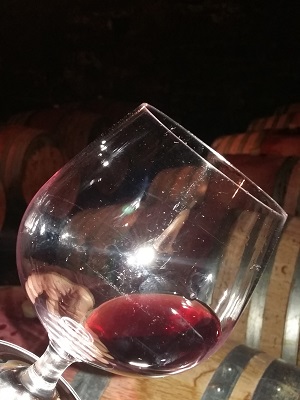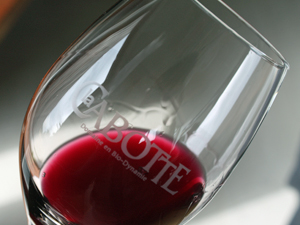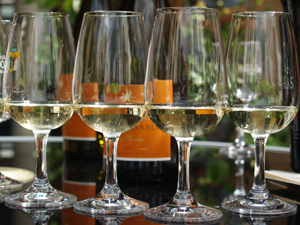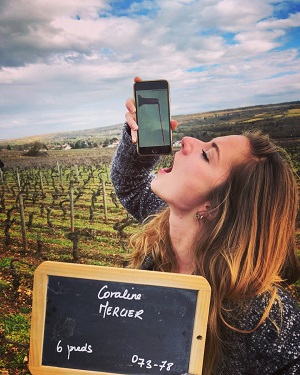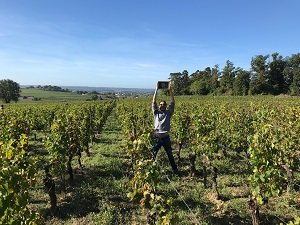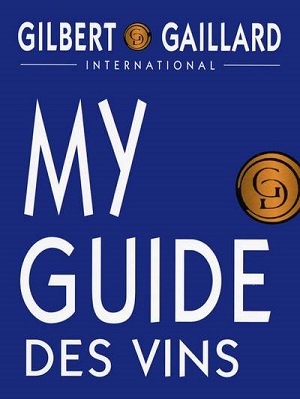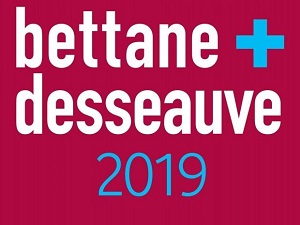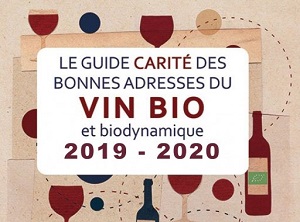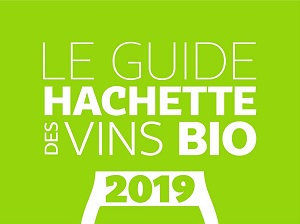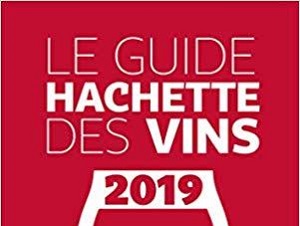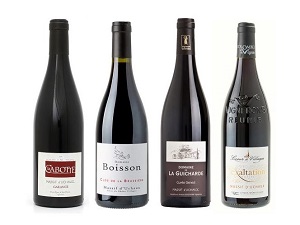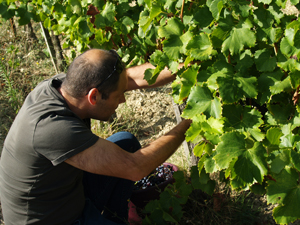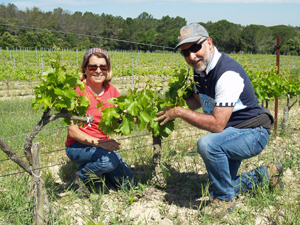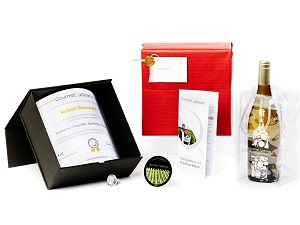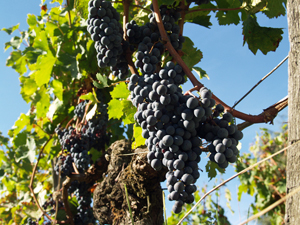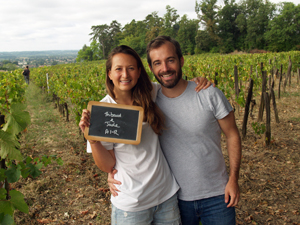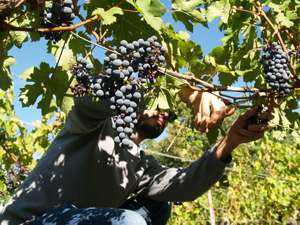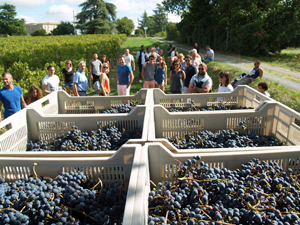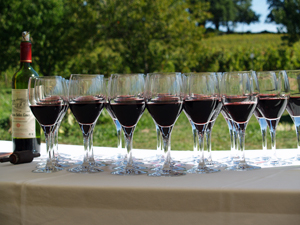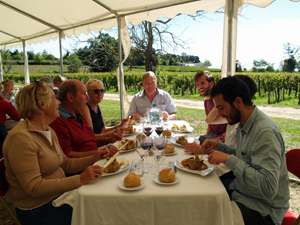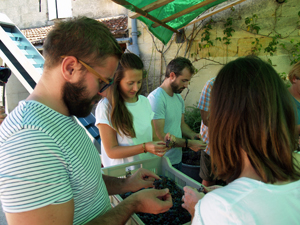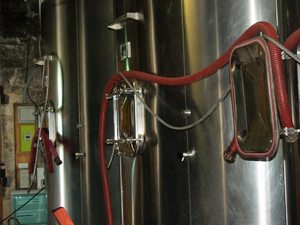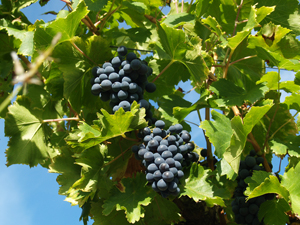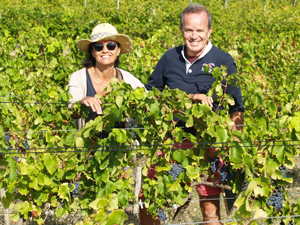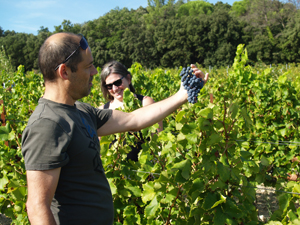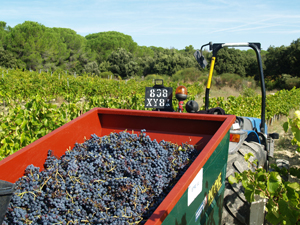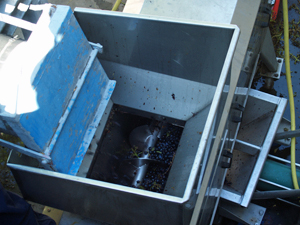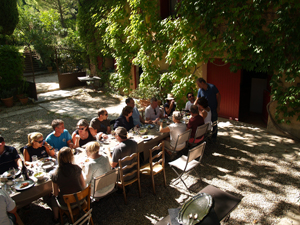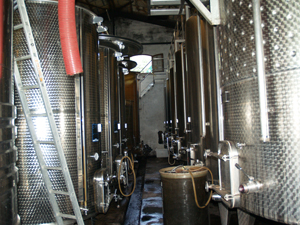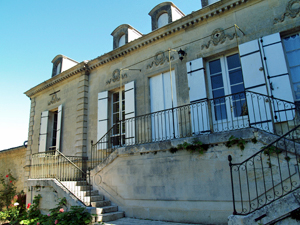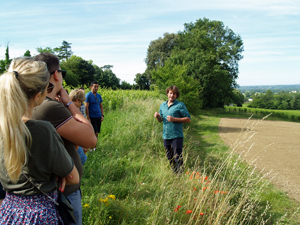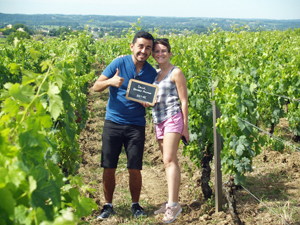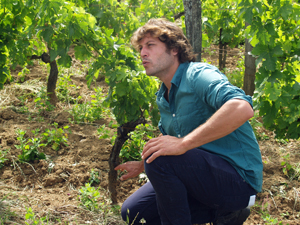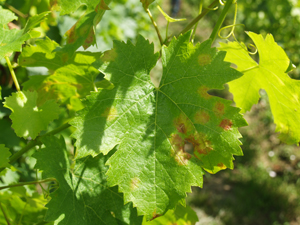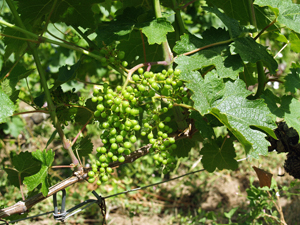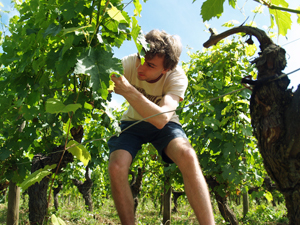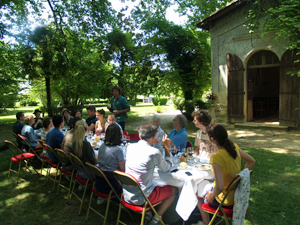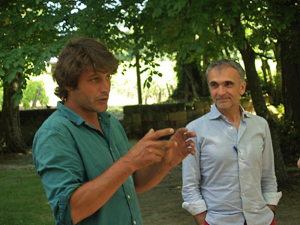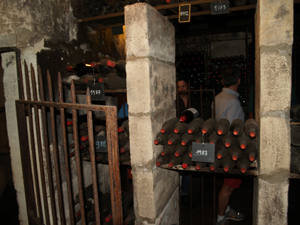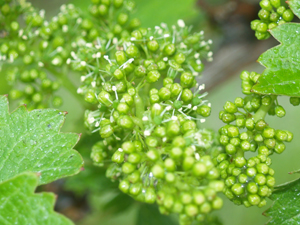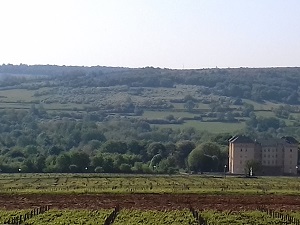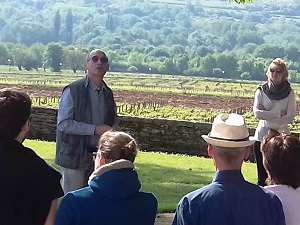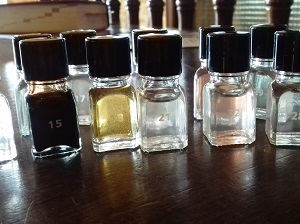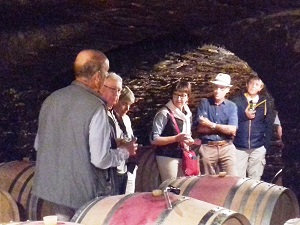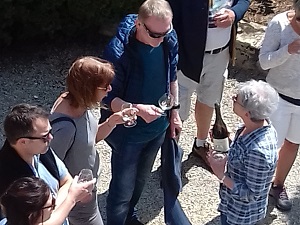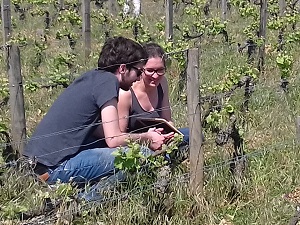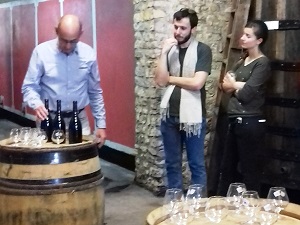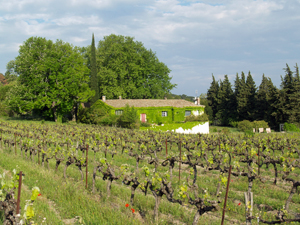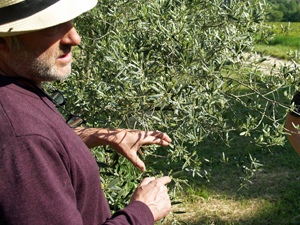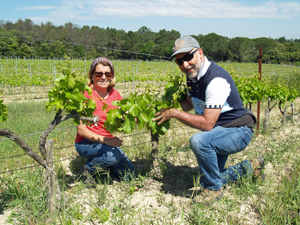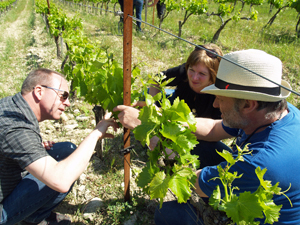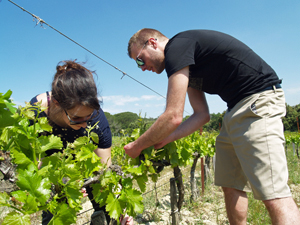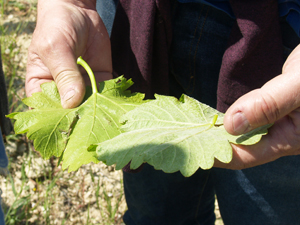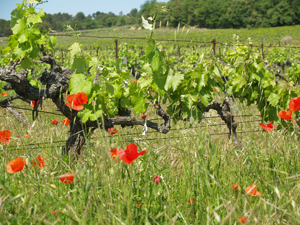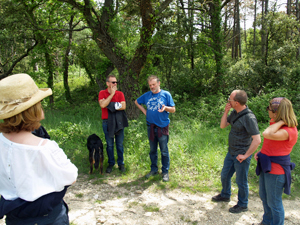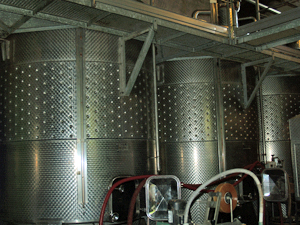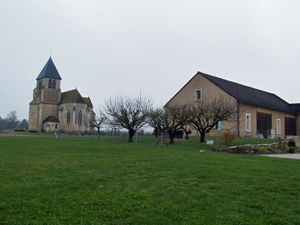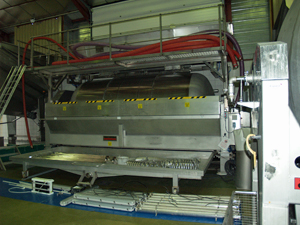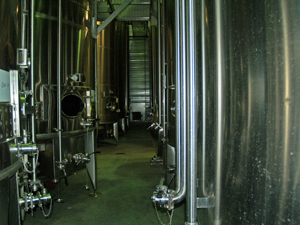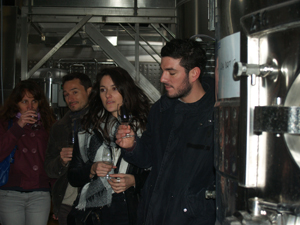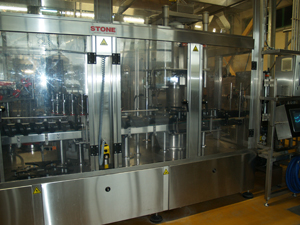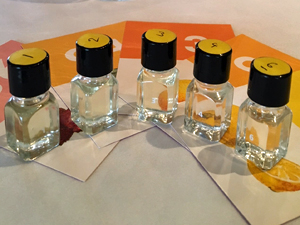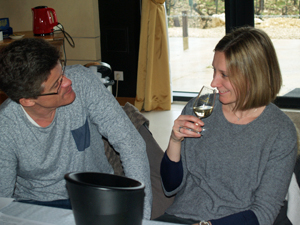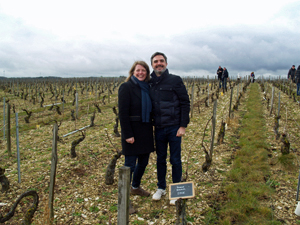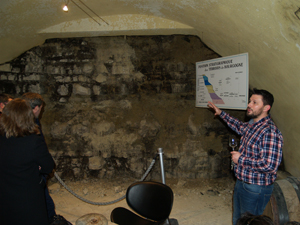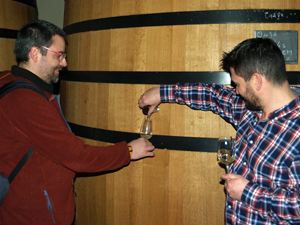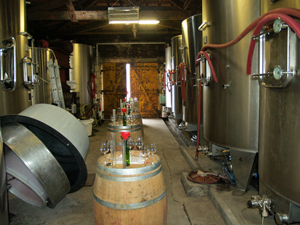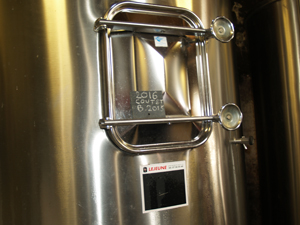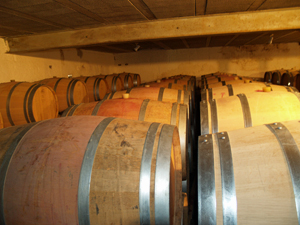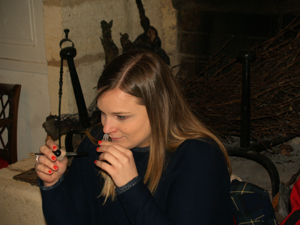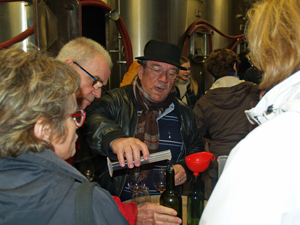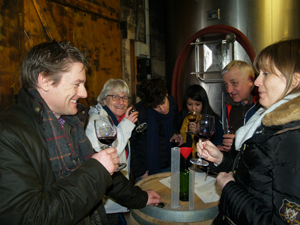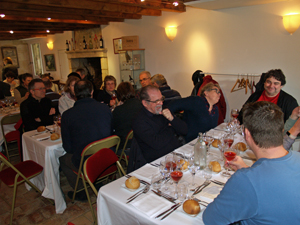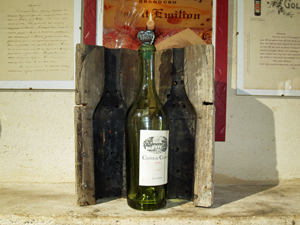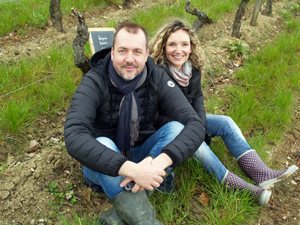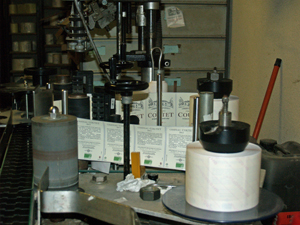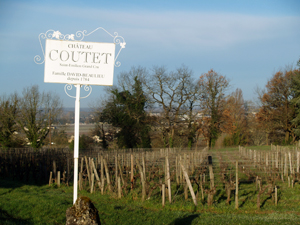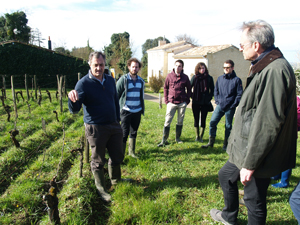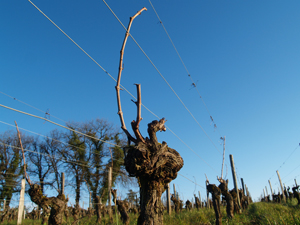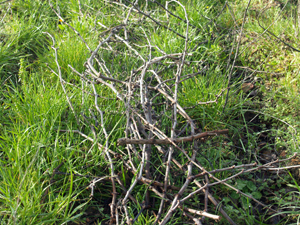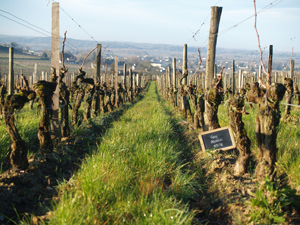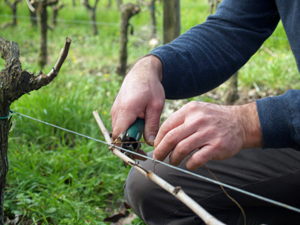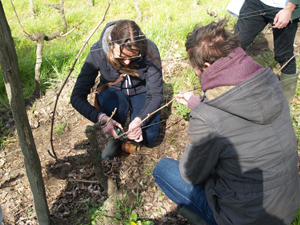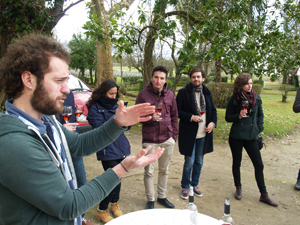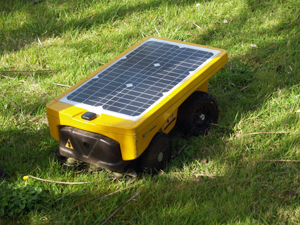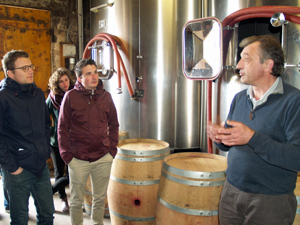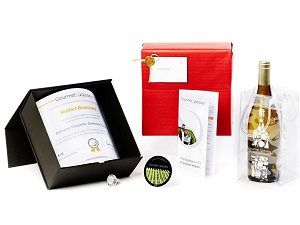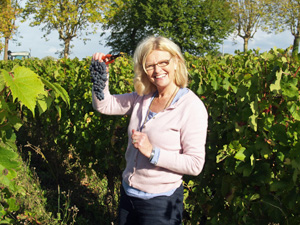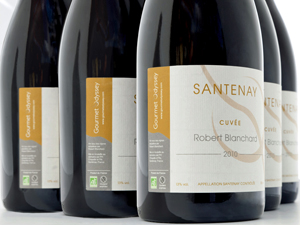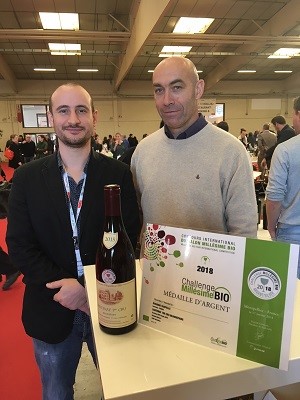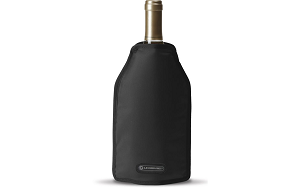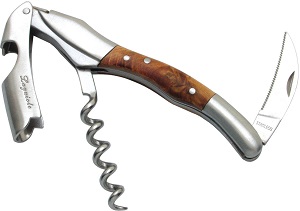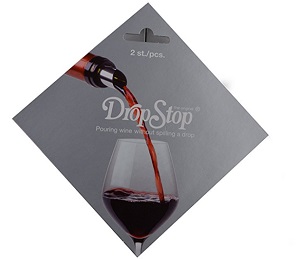Last weekend we had travelled from Avignon, Nancy, Paris, Lyon, Grenoble, Switzerland and England to meet Isabelle and Arnaud Guichard, the winemakers at
Domaine de la Guicharde in the Massif d’Uchaux region of the Rhone Valley.
The first question to come up over a cup of coffee and croissant was who knew the Massif d’Uchaux? Nobody? But that’s not surprising because it is a very exclusive appellation that was formally recognised in 2005 for having its own distinct terroir. We were to talk lots more about the terroir during the course of this Discovery Experience Day, a hands-on wine course at the winery, dedicated to the work in the vineyard before the harvest.
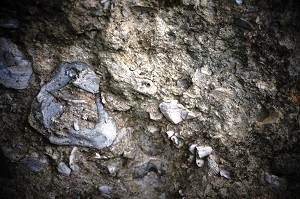
We then headed out into the vineyard, passing by the olive trees. The winery has its own special biodynamic ecosystem, including 30 hectares of vines, an organic olive grove, and 20 hectares of woodland, all of which are to be found around the winery buildings, on a small hill which looks a lot like paradise on this beautifully sunny day!
The hill is what makes the Massif d’Uchaux so special compared to the Rhone Valley plain below. Around 90 million years ago, the sea covered the valley and the hill was an island. On our way to the adopted plot of vines, we stopped to look at the remnants of an old beach that dates back to the Miocene era, where you can still see some shell fish fossils.
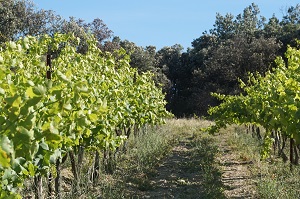
We then arrived on the plateau where a plot of Syrah and a plot of Grenache vines are planted on the terrace that also dates back to the Miocene era. And yes, that’s why the wine chosen for the Gourmet Odyssey Wine Experience, is called the “Terroir du Miocène”, because it is a blend of the grapes that are grown here.
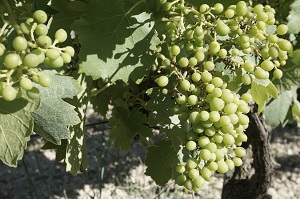
The winter pruning and biodynamic treatments had prepared the vines for the new campaign, and the vines were flourishing. The flowering period went well in early June, and the grape berries are now starting to form. The combination of warm weather and rain in May and June, has seen vigorous growth in the vineyard. Perhaps even a little too much, because the work to till the soil had been delayed. As Arnaud explained, it had been impossible to get the tractor into the vineyard because the ground had been too wet, and it had also not been possible to treat the vines after the rain, because the mistral wind had picked up as soon as the rain clouds had passed over. Regulation stipulates that treating the vines is not allowed if the wind reaches 19 kph, which is a regular occurrence in the Rhone Valley!
Having found our adopted vines and taken a few souvenir photos, we took a closer look at the vines. Arnaud showed us how to spot the difference between Syrah and Grenache vines. The leaves are different as we had seen during our last visit, but now that the grapes have started to form, it is even more evident. The grenache vines produce compact and round bunches of grapes, whereas the syrah vines have more elongated bunches and the grapes are more spaced out. This also explains why the Syrah vines are generally less susceptible to disease than Grenache vines.
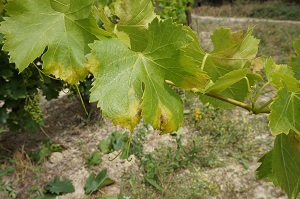
The combination of rain, heat, and lack of treatment leads inevitably to an attack of mildew, and unfortunately we could see some spots on the leaves and berries on the Grenache vines. Thankfully the Gourmet Odyssey adoptive parents had come to help out. Today our task was to remove some of the leaves on the side facing the rising sun to help the air better circulate around the grapes and reduce the spread and impact of the mildew. On the side facing the rising sun, the grapes are only exposed to the weaker morning sun, when the temperature isn’t yet hot enough to dry out the berries, whereas the side of the falling sun receives hotter sunshine at the end of the day, and the leaves are needed to shade the grapes and stop them from burning.
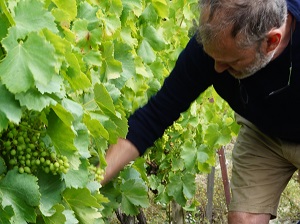
It’s easy to remove the leaves, as Arnaud explained. You just remove all of the leaves from in front of the vines. He uses quick and precise movements, and then we tried to do it as efficiently as him. In pairs, we spread out among the vine rows, and starting plucking. Arnaud moved between us to talk about his work, and to answer the many questions regarding the vintage, weather and the treatments used in the vineyard.
We took a brief pause to quench our thirst, and then Arnaud brought us up to speed on all of the work that had been carried out in the vineyard so far. Pruning, de-budding, raising the training wires, trimming the vines. By this time, we were starting to get a little hungry, and so we headed back to the winery for lunch. On the way, we spotted some of the plants, such as horse tail or yarrow, that are used in the biodynamic treatments.
The nicely chilled rosé in the shade of the courtyard was most welcome. We also tasted the “Pur rouge”, a wine for friends according to Arnaud, and which went down very well on this hot day. We also had some grape juice, organic of course, made from merlot and cabernet grown in Isabelle’s second winery, “Les Mourgettes”.
Lunch had been prepared by Thierry Bonfante, from the restaurant Le Temps de Vivre, just 4 km away. A lentil salad with regional caillettes, slow-cooked beef stew with carrots, cheese and tiramisu, accompanied by a selection of wines from the winery. For the reds, we tasted the Genest and Terroir du Miocène, and enjoyed the Autour de la Chapelle white wine with the cheese.
The questions abounded over lunch regarding the daily life of a winemaker, and at the end of the meal, we came back to the topic of biodynamics. Isabelle talked to us about the book written by Jean-Michel Florin, Viticulture Biodynamique, for those who are really interested in learning more. For the majority of us who are novices in the subject, Isabelle recounted some of the amusing anecdotes from her short book Précis à l’usage de ceux qui pensent que Demeter n’est qu’une déesse grecque. Laughter rang out around the table as she told us about her adventures with the cow horn manure…
Arnaud explained the principals of the biodynamic wine making, developed by Rudolph Steiner and organised around the lunar calendar. To make it more easily understandable, he took us to see the tools used such as the dynamiser and the spraying machine. He told us how he makes the treatments, and he talked about the constraints of the calendar in caring for the vines, depending on whether it’s a fruit, flower, root or leaf day.
We finished the day with a visit to the chai, to understand where the grapes will go after the 2018 harvest. But we still have a little time to go. The date for the
harvest has yet to be fixed as we need to wait a few weeks more to see how the weather influences the development of the grapes. As we had heard throughout the day, in this calm haven where time seems to stand still, it’s the nature and the raw elements who lead the show, and then Isabelle and Arnaud work their magic to make the most of nature’s gift and to produce their excellent wines.



